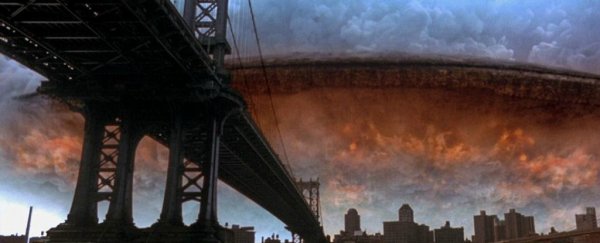One of our favourite things to do when life gets a little overwhelming is watch NASA's International Space Station (ISS) live feed, which broadcasts a serene view over the planet, seven days a week.
It's pretty meditative… until a UFO pops into view and heads towards Earth's atmosphere before NASA strategically cuts the stream - which is the conspiracy circulating the internet this week.
According to YouTuber Streetcap1 - who kicked off the rumour - on July 9, a small, bright object appeared in the ISS livestream footage, descending towards Earth's atmosphere, before the NASA feed cut out (it's since come back online).
The video has quickly blown up, with almost 1.5 million views as we go to print, and rumours spreading all over the internet.
You can see the footage below:
The general assumption from the internet is that, whether this was an alien UFO, a large piece of space debris, or a meteor, NASA must be covering something up.
Except, they're not. NASA has since responded to let the world know that, *sigh*, they didn't spot a UFO and cut their feed. In fact, there's no one manually controlling their feed to cut it, even if they wanted to.
"It's all done automatically. There's nobody at a control board. We used a space-based data relay network. It gives us a very good coverage area, but you do lose signal occasionally - anywhere from a couple of seconds to a couple of minutes," a NASA representative told Popular Mechanics.
"The ISS regularly passes out of range of the Tracking and Data Relay Satellites (TDRS) used to send and receive video, voice and telemetry from the station," said a representative from NASA in a statement published by the Huffington Post.
"For video, whenever we lose signal (video comes down on our higher bandwidth, called KU), the cameras will show a blue screen (indicating no signal) or a preset video slate, depending on where you are watching the feed," the statement explained.
Okay, so the sudden dropped feed makes sense, but what about the bright dot of light you can see heading towards Earth in the footage above?
Well, we don't want to freak you out, but that's actually a pretty common occurrence. Not only are space rocks, such as meteors, burning up in our atmosphere all the time (hello, shooting stars!), there's also plenty of debris out there that can fall to Earth.
But, more likely, the light you can see in the video is nothing more than an artefact - potentially a reflection from the ISS window.
"Reflections from station windows, the spacecraft structure itself or lights from Earth commonly appear as artefacts in photos and videos from the orbiting laboratory, just as reflections often appear in pictures taken on Earth," said NASA.
"No unidentifiable objects have been seen from the ISS," they added.
This isn't the first time scientists have debunked 'UFO sightings' from the ISS live feeds. In fact, these bright points of light are often spotted appearing and disappearing in orbit, causing people to freak out about aliens.
But former NASA engineer James Oberg has taken it upon himself to debunk the most common sightings, and explains that a lot of the time, they're caused by 'space dandruff' - which is the nickname for things like paint chips, dust particles, or ice flakes, which are harmless but can look pretty eerie in space.
That's not because anything scary is going on, but because we're not used to seeing the world from the perspective of hurtling 7 km/s (4.3 mps) through space with very little gravity, and Earth curving away below us.
"Our sensory system is functioning absolutely perfectly for Earth conditions," Oberg told Cara Giaimo over at Atlas Obscura earlier this year. "But we're still a local civilisation. Moving beyond our neighbourhood has been visually confusing."
So the bottom line is, stay calm - part of the reason we have so many cameras, satellites, and telescopes pointed towards space is so that we can catch sight of anything strange out there with plenty of advanced warning.
But this little fleck of light isn't one of those things, so let's all go back to watching the skies without fear.
